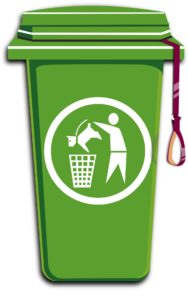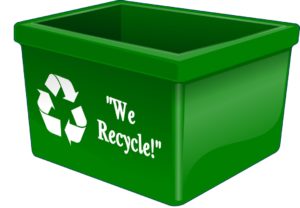Plastic divides consumers into different factions. Many believe that with our yellow bag, the recycling problem is practically solved, or that more packaging will be no problem for the environment, but rather serves food safety: the long shelf life keeps it fresh and reduces waste. Opponents of plastic say that by 2050, we will have more plastic than fish in the world’s oceans and that we need to reduce plastic as quickly as possible and buy unpacked goods. In between, there is an infinite number of shades and ultimately no clear answer from science either. Politicians have provided an answer: there is a significant increase in the minimum amount of plastic that must be recycled to over 63 % from 2022 (46% in 2017). Currently, the majority of the plastic is thermally recycled. However, material recycling does not mean that the newly produced plastics contain 63% of the recyclate. With below 20%, this portion is significantly lower.

What has this got to do with e.g. dry food for dogs and cats? It is mostly sold in plastic packaging. Plastic is also extremely well suited to ensure freshness and marketability for 12-24 months. Usually, however, they consist of composite plastics, as each type of plastic has different advantages: sometimes it is tear-proof and puncture-proof, then it is water-vapor and oxygen-tight; sometimes it is easy to close and then it is particularly beautiful to imprint. So, over the years the packaging industry has developed the “optimal” packaging: PET, aluminium vapor deposition, PE-layer and much more are inextricably linked. In Germany, this material can currently only be incinerated, in Europe often dumped. And outside Europe it sometimes has a very long, but unpleasant life in the open nature. What alternatives do we have?
Currently, the materials of choice seem to be mono-materials. In the case of small containers, they have been existing  for a longer time and are (theoretically) fully recyclable. There are already first suppliers for large containers. Whether, and if so, how well they can meet the various requirements, remains to be shown in practice. But even then, it might just be a Pyrrhic victory, because actually circular economy as the final goal should make its way into the system. Ideally, the container should be produced from recycled material within the cycle itself and afterwards be turned into recyclate again. For this, we would need a functioning recyclate management, which requires recyclate to be used in minimum quantities and / or to be simply cheaper than primary plastic. Currently, both is difficult.
for a longer time and are (theoretically) fully recyclable. There are already first suppliers for large containers. Whether, and if so, how well they can meet the various requirements, remains to be shown in practice. But even then, it might just be a Pyrrhic victory, because actually circular economy as the final goal should make its way into the system. Ideally, the container should be produced from recycled material within the cycle itself and afterwards be turned into recyclate again. For this, we would need a functioning recyclate management, which requires recyclate to be used in minimum quantities and / or to be simply cheaper than primary plastic. Currently, both is difficult.
Even so, it appears to be the most environmentally friendly alternative. Recyclable paper bags are not greaseproof. And actual good solutions such as polywovens are not perceived as super premium by customers and are hardly found in everyday life. In the long run, the sale of smaller quantities in shops selling unpacked goods must be evaluated.
2-neutral in terms of raw materials, but in practice they are often associated with the use of pesticides / fertilizers and low availability at a relatively high price. And finally, they can only be thermally recycled.
The good news at the end of the day is that the differences between dry and wet feed systems regarding the impact of packaging are far greater than between the types of packaging within the dry feed range. Wet feed with its high proportion of waste in relation to the nutrients/containers always causes a larger CO2 footprint than dry feed, ceteris paribus.
Look forward to “the insights” on wet food packaging!
